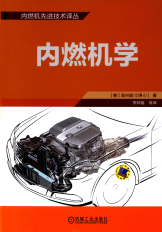
并列正书名: Internal Combustion Engine
主要责任者: [韩]全兴信;李钟福等
责任方式: 著;译
出版者: 机械工业出版社
出版地: 北京
字数: 779 千字
页码: 1-594
中图分类号: TK4
语种:中
定价:198.00
出版时间:2016-01
丛书多卷书否:是
丛书名:内燃机先进技术译丛
书目简介:本册工具书是内燃机先进技术译丛之一,共收录490条词条。
被引频次:36
| 词条 | 内燃机学 |
| 类别 | 中文百科知识 |
| 释义 |  并列正书名: Internal Combustion Engine 主要责任者: [韩]全兴信;李钟福等 责任方式: 著;译 出版者: 机械工业出版社 出版地: 北京 字数: 779 千字 页码: 1-594 中图分类号: TK4 语种:中 定价:198.00 出版时间:2016-01 丛书多卷书否:是 丛书名:内燃机先进技术译丛 书目简介:本册工具书是内燃机先进技术译丛之一,共收录490条词条。 被引频次:36 |
| 随便看 |
开放百科全书收录579518条英语、德语、日语等多语种百科知识,基本涵盖了大多数领域的百科知识,是一部内容自由、开放的电子版国际百科全书。